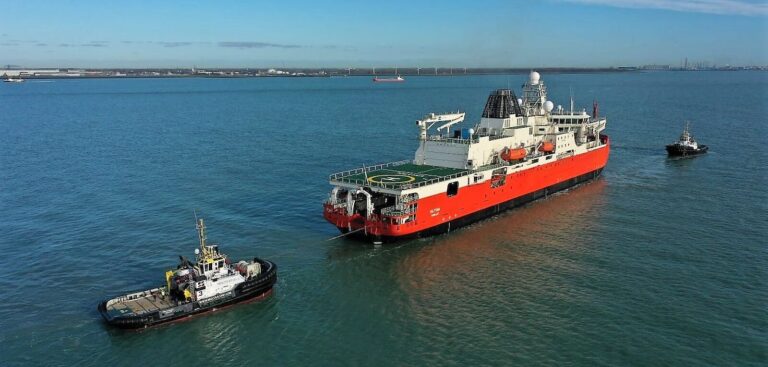As a key element within the Australian government’s ongoing 20-year plan for research in the Antarctic, a new icebreaker, RSV Nuyina, is currently undergoing sea trials in the North Sea. The vessel’s name is the Tasmanian aboriginal word for the Southern Lights, and according to the Australian Antarctic Program, its design has been tailored from the outset to assist scientist in both ocean-based and atmospheric research.
As Phil Boxall, manager, technology and innovation on the project, explained, it will be equipped to maximize data flows from research projects. For example, USVs launched from the vessel will be linked via fiber-optic cables: “We have four fiber-optic cables on winches which will provide state-of-the-art power and data running to deployments on these cables. That in itself is a game changer for the amount of data and information that we can actually obtain,” remarked Boxall.
Furthermore, the vessel will be outfitted with full remote data-monitoring systems. “We’ve developed the ‘Data in Real Time’ application, so that really enhances our efficiency and our safety whereby expeditioners and scientists don’t have to be present to watch a deployment or retrieval or be exposed to the elements, they can sit in their cabin and they can check for updates on their iPhones or their iPads,” added Boxall.
The Sea Trials Phase will last a month and will be followed by additional weeks of deepwater trials. Testing of the ship’s speed, noise, propulsion systems, steering, advanced electrical systems and science equipment will take place as the vessel prepares for final sea ice trials in the Arctic early next year.
With capacity to carry 117 expeditioners, 1,200 tons of cargo and 1.9 million liters of fuel, the icebreaker will be the main lifeline to Australia’s Antarctic and sub-Antarctic research stations for decades to come. Following successful completion of trials, it is expected to arrive in its home port of Hobart in mid-2021 to commence Antarctic operations in next year’s summer season.



